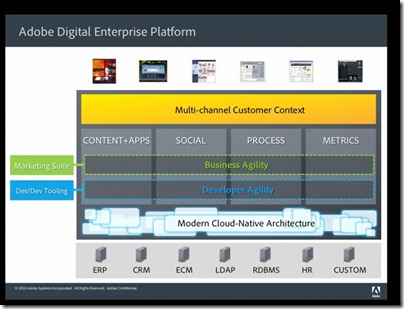The big new thing in social media right now is Google+, the search giant’s latest attempt to grab a slice of the social internet from Facebook and Twitter. I have been trying it for a few days and like everyone else have enjoyed playing with circles, the ability to categorise contacts into groups and choose who you sharing with. I like that it addresses a core issue, the fact that we want to share different things with different people, but dislike the added complexity. In practice, if I have a personal message I am likely to use email or some other form of direct messaging, whereas what I post on a social networking site I will likely address to everyone.
Still, Google+ is a decent effort, and irrespective of how it compares in detail to its rivals, I think it may take off simply because Google has other properties, specifically Google search and Google Android, which will point you to it.
The value of social networks to a search company was highlighted this week, not by Google but by Microsoft at its Worldwide Partner Conference. The opening keynote was short on big news, but did include a demo of new features in Bing, that other search engine.
Stefan Weitz Director of Influentials, showed how Bing can interact with Facebook so that you search results are annotated with the preferences of your friends. Here, Weitz has searched for “Mango” and Bing shows a section of results marked as Liked by your Facebook friends:
He then searches for Hawaii hotels for kids and sees this:
Once again, he sees two of his own contacts who have Liked a specific web site. He can go to the site with more confidence, or even click the name to interact directly with his contact and find out more.
This is powerful stuff, though the examples are contrived, and this is only going to work if you and your contacts do many of the same searches with the same search engine. The Microsoft/Facebook alliance has an advantage over Google in that Facebook has a bigger and more mature social graph; but Google has the advantage of a far larger search share, especially outside the USA. On this site, for example, here are the figures for July:
- Google 90%
- Bing 3.7%
- Yahoo! 3.4%
You can figure out how much that leaves for “Other”.
Another Bing move also merits reflection. Weitz went on to demonstrate how Bing wants to you to do the transaction as well as the search on its portal. It is actually fine for Bing to do this with its small market share; but I am not sure that I like the implications for search in general.
This hints at my central concern, which is monopoly. One reason I like Twitter is that I have no sense that Twitter wants to take over my digital life. I know Google does; it wants my searches, my email, my documents, my music, my location, and now my friends.
I know Facebook wants a big slice of it too; it wants me to live inside its walled garden.
These thoughts chime for me with another incident from the last few days. I posted something for sale on eBay, the dominant online auction site, and found that it has notched up its terms and conditions with me further in its own favour by insisting that I set up automatic payment of its fees before it would allow me to post the item. It also happens that PayPal, owned by eBay, has recently sent me a notice advising that it is restricting the number of sales that can be funded by credit card, I presume because it dislikes the consumer protection gained by buying by credit card.
The connection here is that eBay and PayPal only have the liberty to make these unilateral changes in their terms because of lack of competition. Yes, there are other online markets; but if you actually want to sell stuff, there is little real-world choice. Well, there is Amazon; and there is another organisation which, for all its many merits, is constantly extending its reach.
It is curious in a way, that when the web first appeared it seemed to be a great opportunity for the little guys – because on the Internet, nobody knows you’re a dog – but what we are now seeing is that winner-takes-all applies to a degree which goes beyond anything in the bricks and mortar world.











